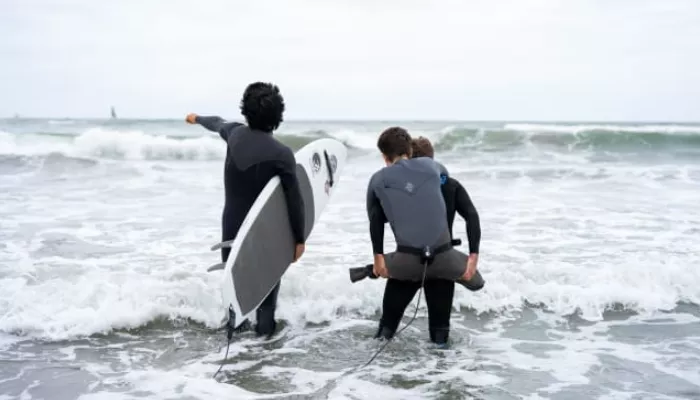Adaptive surfing, also known as para surfing, is rapidly gaining traction around the globe, challenging perceptions of who can ride the waves. For those with disabilities, surfing was once considered out of reach—but thanks to determined athletes, organizations, and communities, that reality is changing.
In the past, surfing culture was often associated with a narrow image—white, male, and blond. While there’s still work to be done in terms of representation in the media and on the waves, the rise of adaptive surfing stands out as a major step forward. This movement highlights that surfing, at its core, is about fun and connection with the ocean, regardless of physical ability.
What is Adaptive Surfing?
Adaptive surfing follows the same principles as traditional surfing: riding waves and having fun. The key difference lies in the abilities of the athletes. Surfers may have amputations, limb differences, vision impairments, or spinal cord injuries, yet they share a deep passion for the sport. These athletes prove that surfing is accessible to anyone, regardless of their physical challenges.
Changing Perceptions and Expanding Access
The rise of adaptive surfing has been driven by individuals and organizations working hard to make the sport more accessible to those with disabilities. In the past, there was a belief that surfing wasn’t possible for people with disabilities, but athletes like Jesse Billauer and Bethany Hamilton are shattering that misconception. Billauer, who sustained a spinal cord injury that left him paralyzed, continued to surf and later founded the organization Life Rolls On to help others with disabilities experience the joys of surfing. Similarly, Hamilton, who lost her arm in a shark attack, became a powerful symbol of perseverance, inspiring many to believe that nothing should stand in the way of a surfer’s dreams.
Opportunities for Participation
Across the United States, several organizations are helping people with disabilities get involved in adaptive surfing. For instance, Waves 4 All hosts free adaptive surf clinics every last Sunday of the month in Oceanside, California. The Stoke for Life Foundation and the High Fives Foundation also offer surf camps and clinics for individuals of all abilities. Additionally, organizations like the Challenge Athletes Foundation (CAF) organize surf events in San Diego and Los Angeles, while Surf Education Academy (SEA) offers private and group lessons year-round.
John White, director of Waves 4 All, emphasizes the importance of building confidence and independence among adaptive surfers. “The goal is to build confidence and networks so surfers can eventually go out on their own,” says White. “We want them to feel motivated and confident enough to incorporate surfing into their lives just like anyone else.”
Competitions and the Future of Adaptive Surfing
As adaptive surfing continues to grow, athletes have the opportunity to take their skills to competitive events. The US Open of Adaptive Surfing, the ISA Adaptive World Championships, and the upcoming inclusion of adaptive surfing in the 2032 Brisbane Olympics are major milestones for the sport. Adaptive surfing has eight categories, divided between men and women, and the competition provides a platform for athletes to showcase their skills while raising awareness.
John White acknowledges that adaptive surfing is still in its early stages but believes these athletes are pioneers. “Jose Martinez is the Gerry Lopez of multiple amputee surfers, and Josh Loya is the Greg Noll of blind surfers,” White says. “People will look back at their contributions and recognize how significant they’ve been for the sport.”

